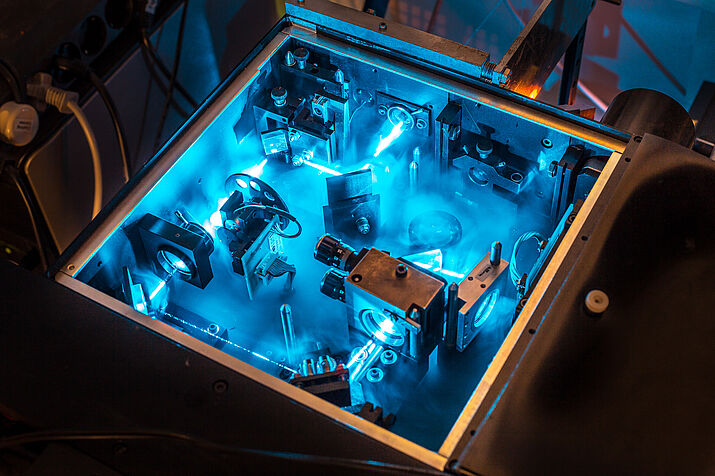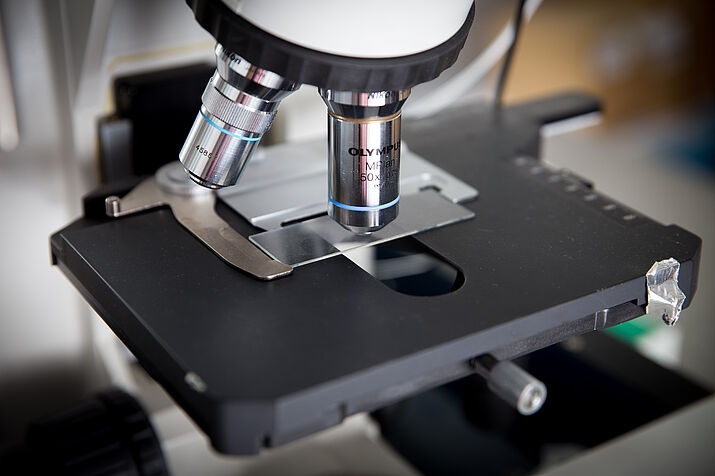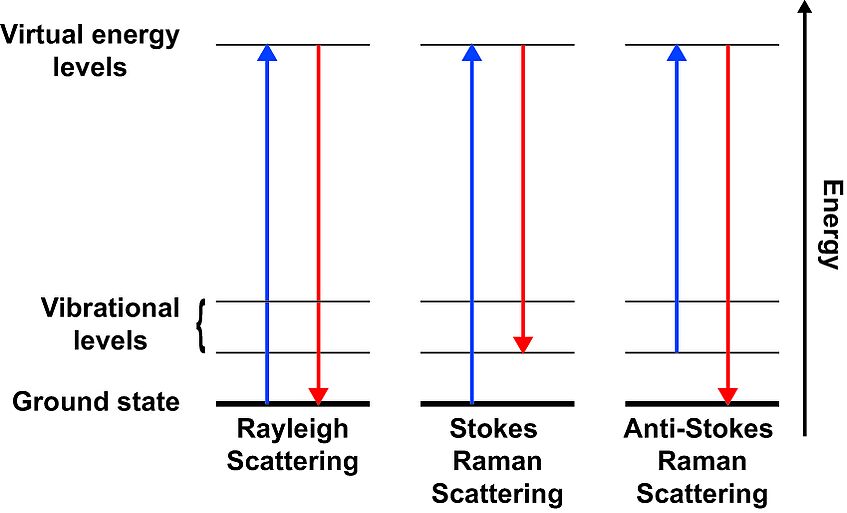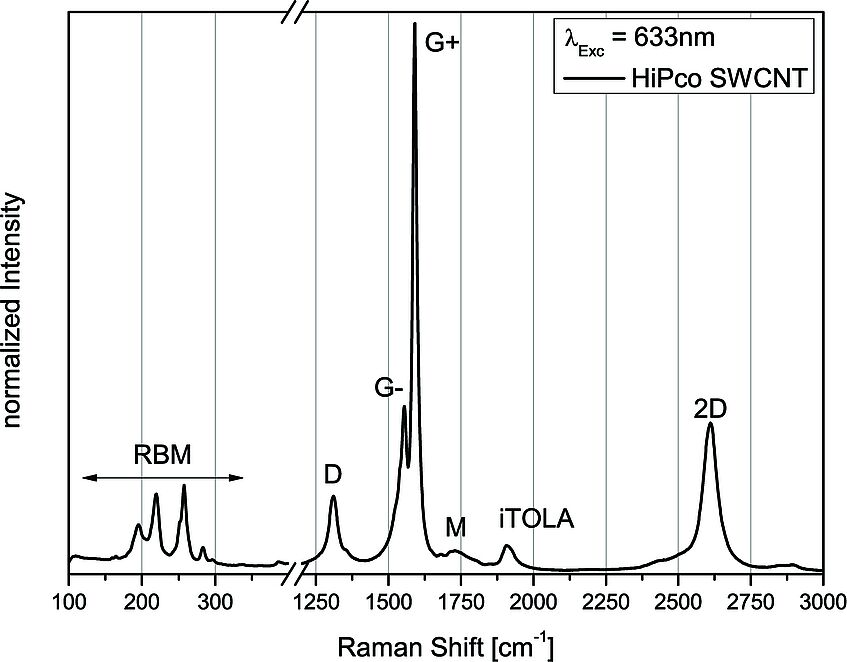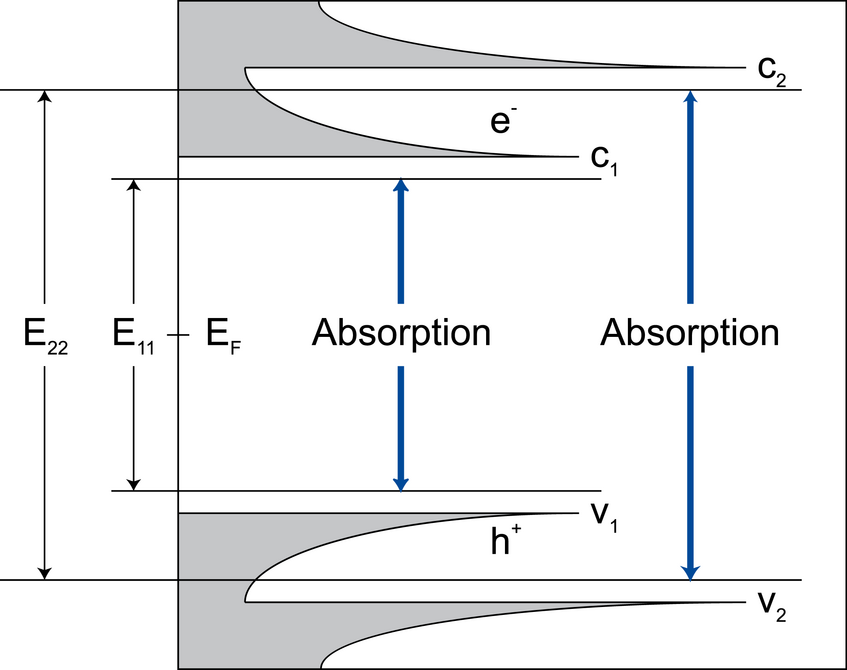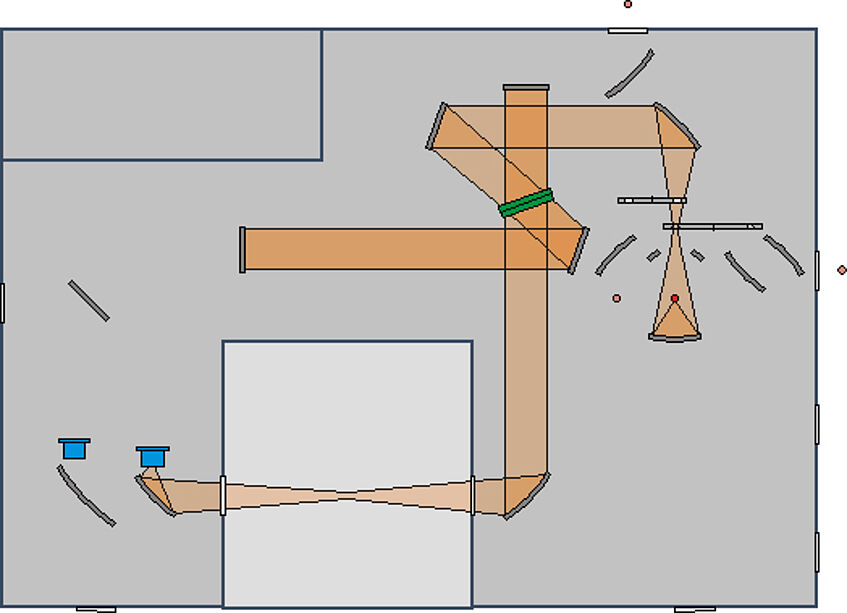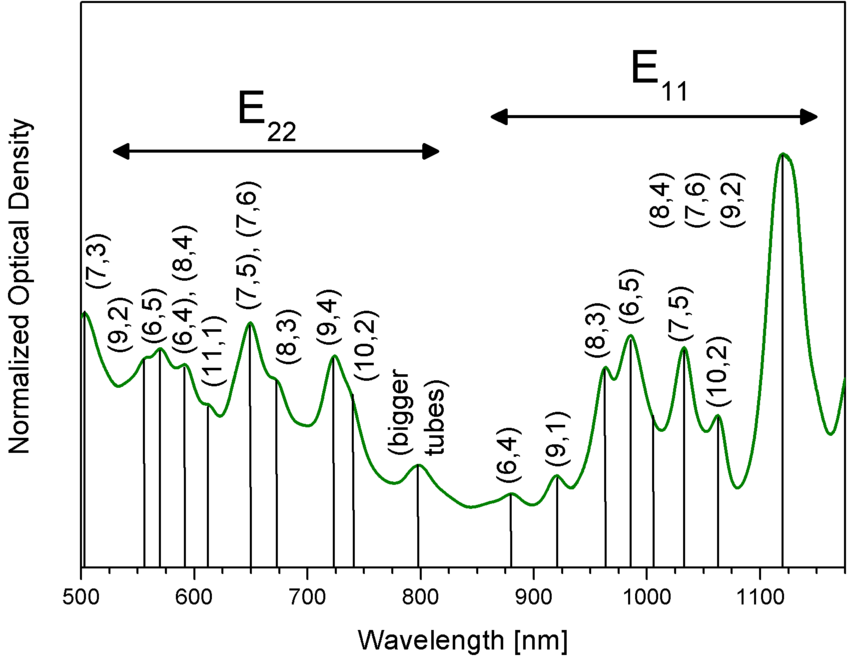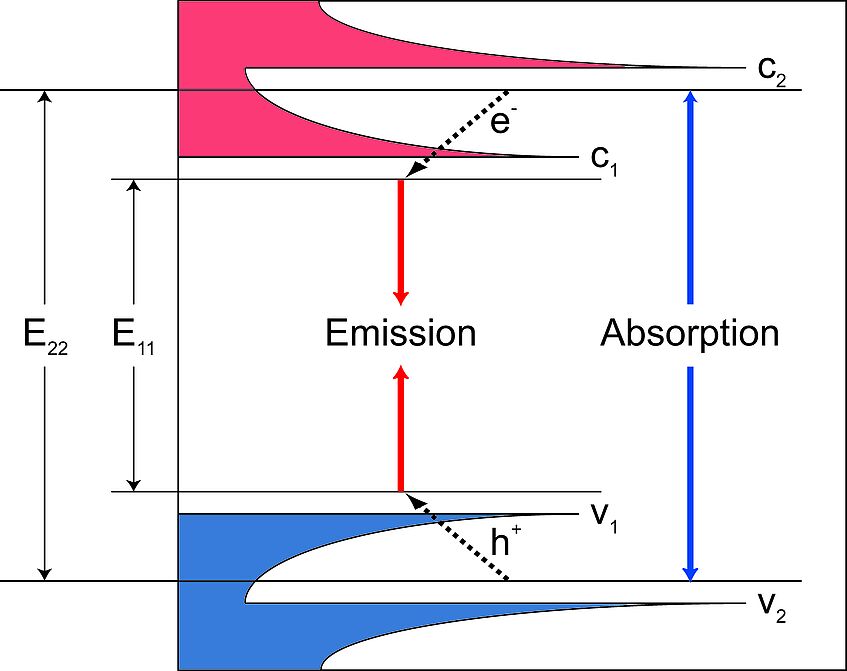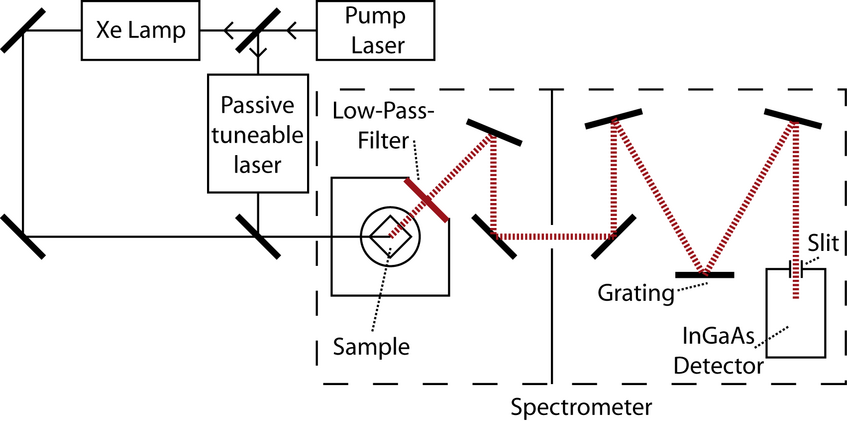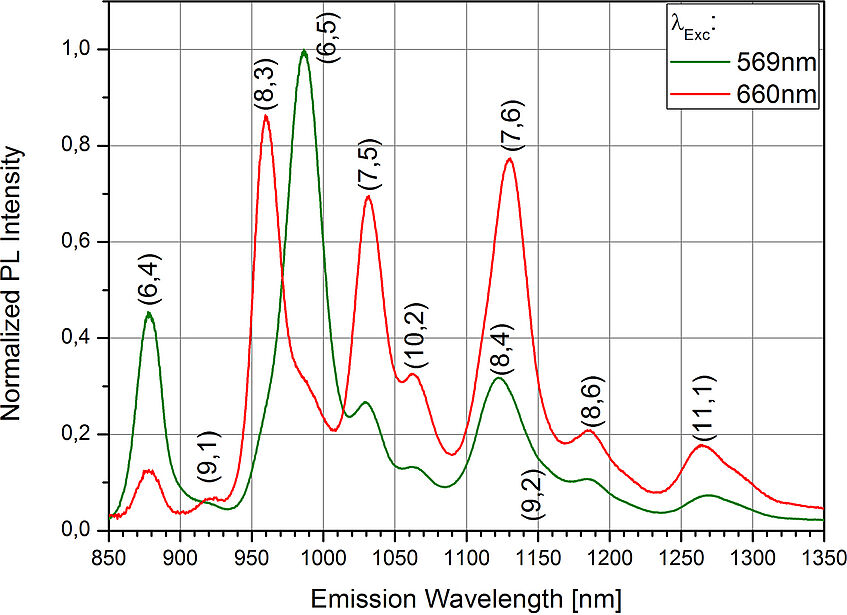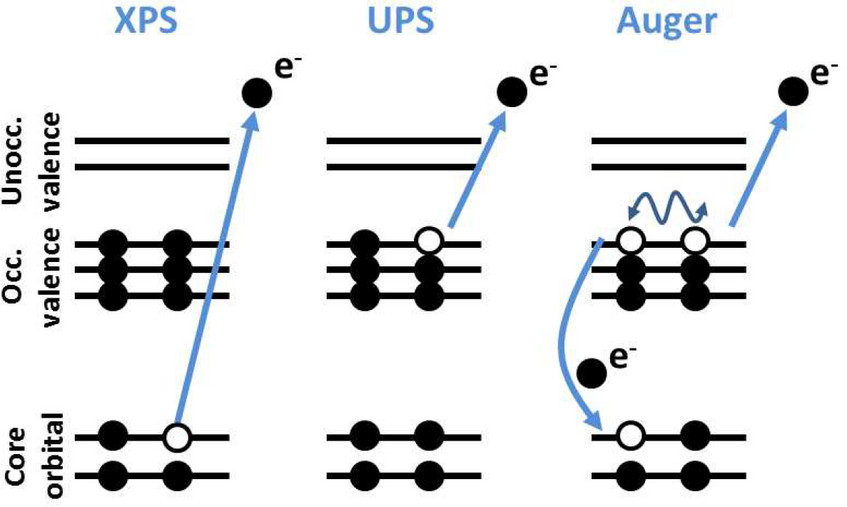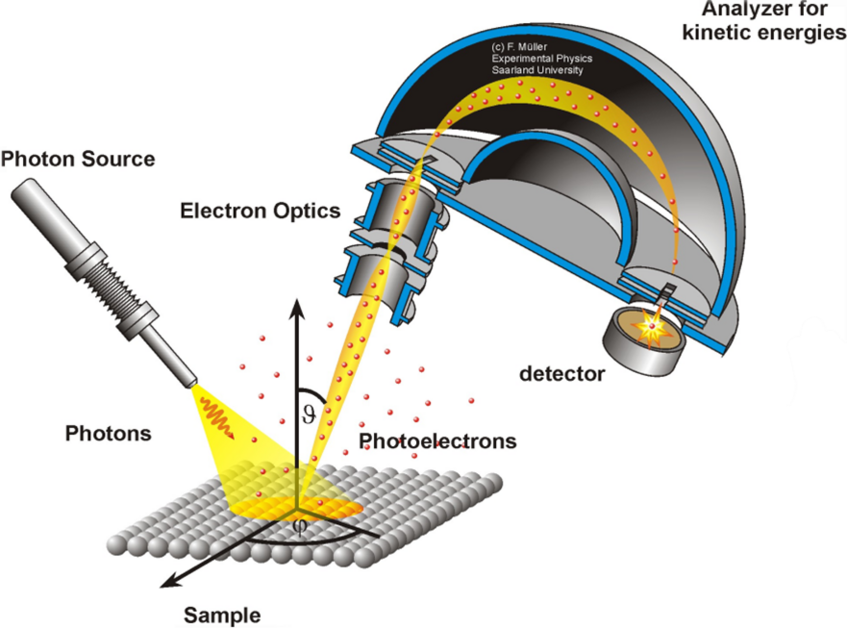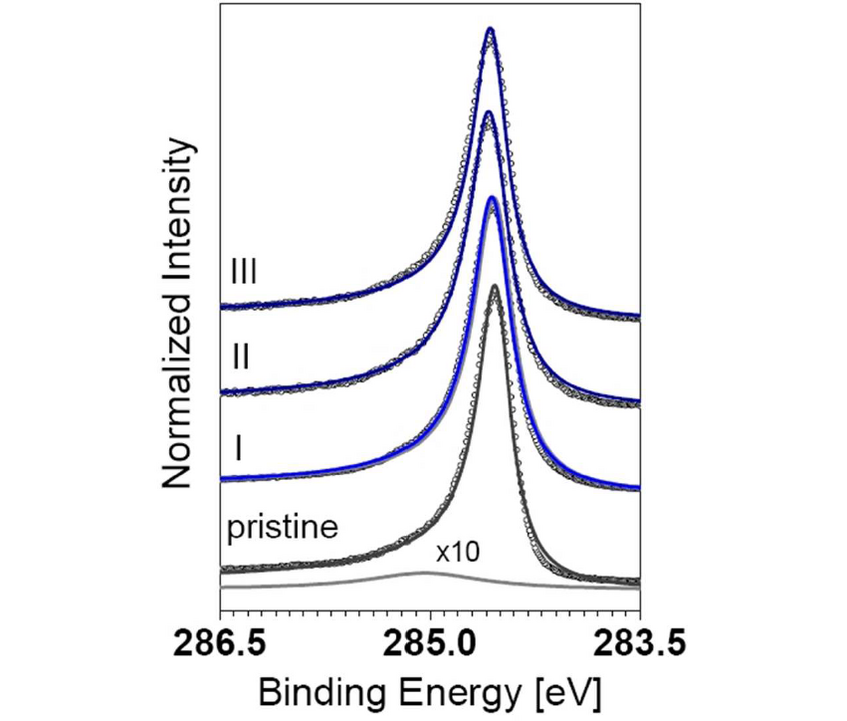Methods
We can do so much stuff in our labs. So many beautiful, beautiful things, it's amazing. Light, lasers, everywhere, believe me. No one does better science than we do. We do Raman-, Optical Absorption-, Photoluminescence-, and Ultriviolet / X-Ray Photoemission Spectroscopy.
Raman Spectroscopy
Raman spectroscopy involves the analysis of light scattered inelastically from a sample which has become a powerful tool in solid state physics for material characterization. The advantages are: a) it is a non-destructive method, b) no complicated sample preparation required and c) it is reasonably fast and can be performed at room temperature and ambient pressure. In general an electron can be excited from the ground state to a higher "virtual" level by absorption of a photon. The recombination of the electron with the hole can occur either directly without energy loss so the incoming photon is scattered eleastically (Rayleigh scattering), or inelastically by the emission (Stokes scattering) or absorption (Anti-Sokes scattering) of phonons.
When an object is excited at an energy level corresponding to an optical transition, i.e. performing Resonance Raman Spectroscopy, the scattering probality is enhanced and therefore also the scattered intensity. One-dimensional objects such as Carbon Nanotubes or Carbyne have a very high density of states due to their structure, facilitating the investigation of their properties even down to the single molecule level.
At the University of Vienna, we are able to perform Raman Spectroscopy with a multitude of lasers ranging from the blue to the infrared with high spectral resolution, temperature dependent and in situ, i.e. while a sample is functionalized. Below you can find an excerpt of our highlight publications related to Raman experiments performed in our labs:
"Prescise determination of graphene intercalation by in situ Raman spectroscopy" - Vecera et al., Nature Communications, 2017
"Doping of metal-organic frameworks towards resistive sensing" - Shiozawa et al., Scientific Reports, 2017
"Confined linear carbon chains as a route to bulk carbyne" - Shi et al., Nature Materials, 2016
"Potassium intercalated multiwalled carbon nanotubes" - Chacon-Torres et al., Carbon, 2016
"Catalyst and Chirality Dependent Growth of Carbon Nanotubes Determined Through Nano-Test Tube Chemistry" - Shiozawa et al., Advanced Materials, 2010
Optical Absorption Spectroscopy
Optical Absorption Spectroscopy is one of the most fundamental techniques as it directly probes optical transitions and is therefore an essential method for investigating the properties of various kinds of materials of interest throughout the fields of physics, chemistry and biology.
In carbon nanotubes, the optical response is dominated by excitonic effects, as a result of the nanotubes' one-dimensional structure. The excitonic transitions depend on the chirality and the diameter of the respective nanotube and happens in the visible or near-infrared region of the optical spectrum.
For our research on carbon nanotubes, the optical absorption of a specific sample reveals different kinds of useful information, most importantly the diameter distribution within a sample, debundling efficiency, charge transfer between a nanotube and its fillant, quenching efficiency, etc.
At the University of Vienna, we are able to perform Optical Absorption Spectroscopy on solid and liquid samples from the UV range to the far-infrared region of the optical spectrum, under ambient pressure or in vacuum. Below you can find an excerpt of our highlight publications related to Optical Absorption experiments performed in our labs:
"Selective Enhancement of Inner Tube Photoluminescence in Filled Double-Walled Carbon Nanotubes" - Rohringer et al., Advanced Functional Materials, 2016
"Purification, separation and extraction of inner tubes from double-walled carbon nanotubes by tailoring density gradient ultracentrifugation using optical probes" - Rohringer et al., Carbon, 2014
"Selective Enhancement of Photoluminescence in Filled Single-Walled Carbon Nanotubes" - Liu et al., Advanced Functional Materials, 2012
Photoluminescence (PL) Spectroscopy & Microscopy
The term Photoluminescence (PL) stands for light emission from any sort of matter after being excited by and absorbing photons. Following the excitation, different kinds of relaxation processes depending on the investigated material occur after which photons are emitted, for example Coulomb scattering or interaction with phonons. In direct band gap semiconductors, excitation of the material with a photon energy larger than its band gap leads to the formation of electron-hole-pairs, so called Excitons, which, after relaxation to the band gap minimum, recombine under emission of photons with lower energy than the original excitation.
For typical semiconductors, the exciton binding energy is small and in the range of room temperature (~ 25meV), so experiments have to be performed at much lower temperatures to observe significant PL. In Carbon Nanotubes, the situation is different; their one-dimensional structure accompanied by their peculiar electronic structure results in much higher excitonic binding energies (several hundred meV) due to electronic many-body effects, making them stable at room temperature. Since Carbon Nanotubes can have different diameters and chiralities (see Link to Research Focus), excitation and emission wavelengths can vary greatly, facilitating the unambiguous identification of specific Nanotube species. From PL measurements on Carbon Nanotubes one can derive not only the diameter distribution of a sample, but can get insight into the efficiency of the PL when the samples have been treated differently, e.g. different synthesis processes, post-synthesis treatments like filling, different interaction with the environment, etc.
To gain more insight, you can find an excerpt on our highlight publications related to PL measurements performed in our labs below:
"Selective Enhancement of Inner Tube Photoluminescence in Filled Double-Walled Carbon Nanotubes" - Rohringer et al., Advanced Functional Materials, 2016
"Purification, separation and extraction of inner tubes from double-walled carbon nanotubes by tailoring density gradient ultracentrifugation using optical probes" - Rohringer et al., Carbon, 2014
"Selective Enhancement of Photoluminescence in Filled Single-Walled Carbon Nanotubes" - Liu et al., Advanced Functional Materials, 2012
Ultraviolet & X-Ray Photoemission Spectroscopy (UPS & XPS)
Something about UPS and XPS
Publications:
"Doping of metal-organic frameworks towards resistive sensing" - Shiozawa et al., Scientific Reports, 2017
"Chirality-dependent growth of single-wall carbon nanotubes as revealed inside nano-test tubes" - Kharlamova et al., Nanoscale, 2016
"Doping of single-walled carbon nanotubes controlled via chemical transformation of encapsulated nickelocene" - Kharlamova et al., Nanoscale, 2015
"On the bonding environment of phosphorus in purified doped single-walled carbon nanotubes" - Ruiz-Soria et al., Carbon, 2015

